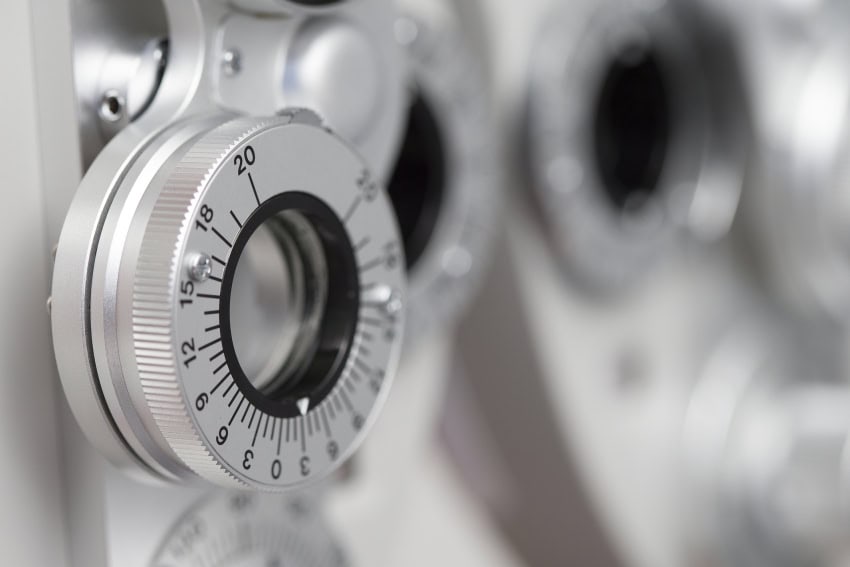Being an optometrist, I am writing this article on COVID-19 pandemic effects on the eye and role of an optometrist for prevention as well as awareness about the further spread of this pandemic.
In late December 2019, a new coronavirus COVID-19 was reported in Wuhan (a city of China). Its ailment may be as minor as cold or may be as serious as bronchitis and kidney failure, severity can be life-threatening. As an optometrist, if I relate it with the eye, we can see significant ocular symptoms. Conjunctivitis (pink eye) is inflammation of the conjunctiva, a membrane covering the eyeball. Conjunctivitis is presented as an infected/red eye, wet and weepy eyes. It may be viral, bacterial or fungal.COVID-19 is known to present with upper respiratory infections like cold, flu and it can associate with symptoms of viral conjunctivitis.
In a recent study of hospitals across China, published in “New England journal of medicine” we have found conjunctiva congestion / red infected eyes in 9 of 1099 patients’ i.e. about 0.8% with a confirmed diagnosis of COVID-19. Another study in ‘The journal of medical virology” of 30 patients hospitalize for COVID-19 had only one patient diagnosed with conjunctivitis. Based on this information the occurrence of conjunctivitis is low. So in the condition of this pandemic, If you see someone with pink eye, don’t panic. Health officials believe a viral pink eye develops in about 1-3% of people with COVID-19.
Researchers are advising the intake of hydroxychloroquine as treatment of this virus but if we talk about the side effects of these drugs it can cause irreversible skin, eye, muscle, and heart toxicity if they are taken without guidance. Plaquenil can cause a condition called hydroxychloroquine retinopathy (If high dosage or taken for a long time), often referred to as bulls-eye maculopathy. As it progresses, it begins to affect central vision and becomes life-altering. Glad to know that our government is taking good steps against this pandemic. Lockdown and Quarantine are preventing the further spread of this disease to a greater extent although we have to spread public awareness for further prevention and control.
Usama b. Zaid said the prophet (P.B.U.H) said:
“If you hear of a plague inland do not enter it, and if
It breaks out in the land where you stay, do not leave’’
Abu Huraira narrated that Allah’s Messenger (P.B.U.H) said:
‘’Do not quarantine the healthy with infected”
So if we talk about optometrists in this situation:
- For everyone’s safety, Optometrists and eye doctors are urged not to see patients during this pandemic accepts for urgent or emergency care.
- Always wear masks and face shields and use sterilized equipment.
- Use sanitizer after each checkup. Use disinfectants for Slit lamp, Autoref, Ophthalmoscope/ Retinoscope.
- Any eye surgeries and procedures that are not emergencies should be postponed.
- When to call optometrists? Call your optometrist if you have the following situations
Macular degeneration or when you are getting regular eye injections.
- If you are noticing a lot of flashes or floaters
- Sudden loss of vision.
- Red-eye with headache and respiratory conditions.
For public awareness, we have some key points to instruct the public.
- If you are wearing contact lenses, switch to glasses and clean them also.
- If you are taking care of the potentially exposed persons, safety goggles may offer a stronger defense.
- If you are allowed to more than one month of essential eye medicines, such as glaucoma drops, you should stock up on medicines.
- Avoid rubbing your eyes.
- Practice safe hygiene and social distancing.
- Wash your hands often with soap and water for at least 20secs before eating, sneezing, coughing or blowing your nose.
- Wear a medicated mask and keep a hand sanitizer all time with you.
- If you think someone has a respiratory infection, it’s safer to stay at least 6 ft away.
- Regular disinfect common touch surfaces and items like doorknobs etc.
- May Allah forgive us protect us and show his blessings and mercy upon all of us.ameen
The writer is working as a practitioner at The University of Lahore Teaching Hospital and LRBT, Lahore.














